Accelerate Threat Response using CFTR’s Machine Learning
Category: Cyware Product
Cyware Products Used:
Cyware Fusion and Threat Response (CFTR)
Problem Statement
Threat response and incident management are crucial parts of a cyber fusion center and any security operations workflow. Organizations need to have the right plan, the right analyst on the job, and the required contextual threat intelligence to remain vigilant against threats. While organizations strive to develop a synergy between human capital and technology infrastructure by implementing the right processes, Cyware uses machine learning to improve the speed and accuracy of decision-making in the threat response lifecycle.
Solution
Cyware takes a more practical approach to deliver the real benefits of machine learning for Cyware Fusion and Threat Response (CFTR) users.
CFTR’s machine-learning model supports the following operations to enhance your fusion and threat response processes.
Assigns the right analyst to incidents based on previous incidents
Recommends related incidents based on incident similarities
Recommends the most relevant knowledge base articles that help analysts in incident investigation
Recommends relevant orchestration playbooks based on similar Incidents and incidents attributes
Recommends merging similar incidents based on incident details
Suggests connecting more contextual and actionable threat intelligence and finds links between disparate threat elements
CFTR Machine Learning Use Cases
To automate Incident Assignment
Security teams often have trouble deciding which analysts should handle different incidents. The skill level, expertise, and availability of an analyst all come into play, making it a difficult problem for automation.
CFTR simplifies this process by automatically suggesting the best-suited analysts by analyzing historic incident data, incident ownership details, and analyst shift rosters using self-trained machine learning models.
CFTR’s highly accurate machine learning model is automated right from collecting data to turning them into practical analyst assignment suggestions.
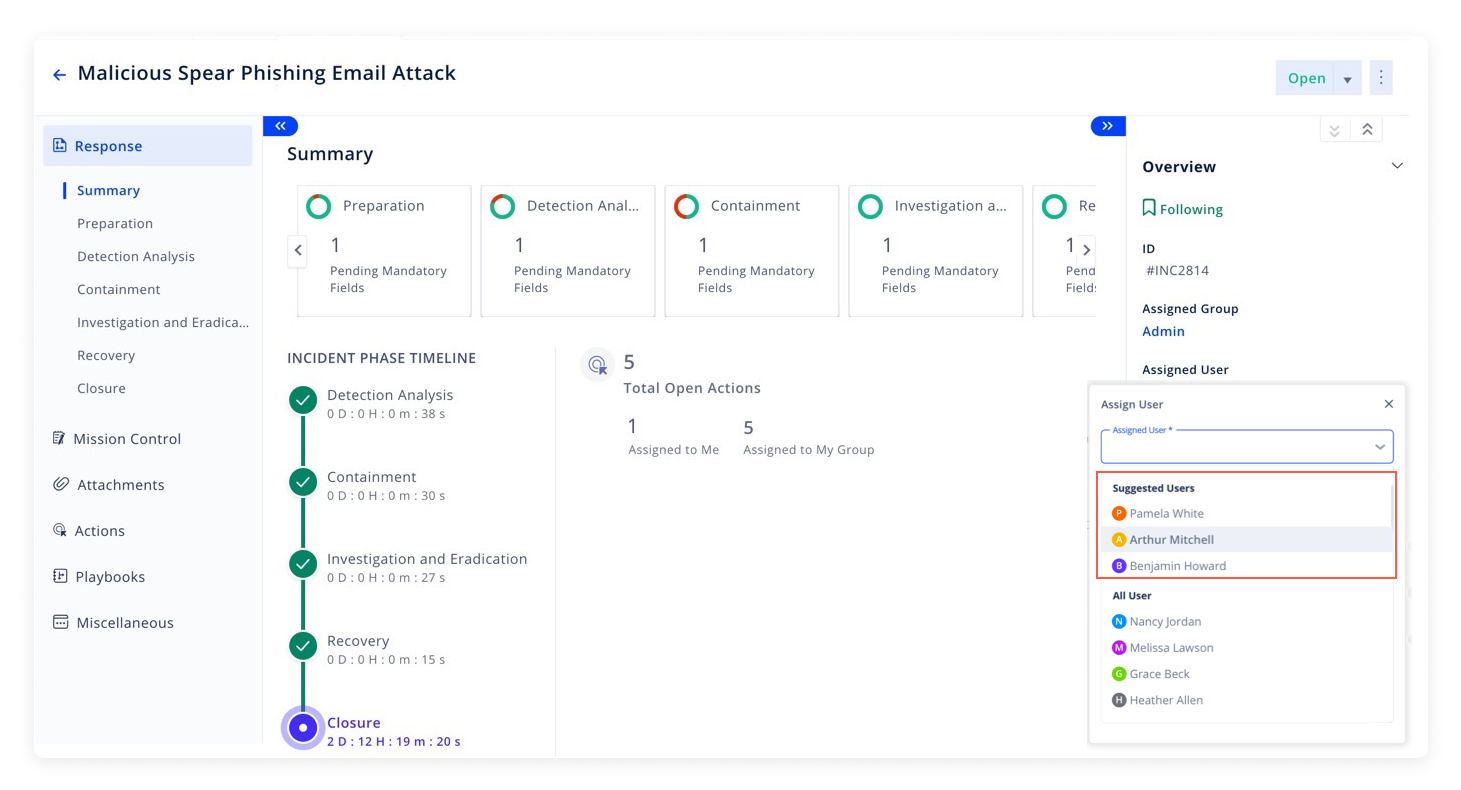
Get Related Incident Recommendations
The threat response process must identify and analyze the clues related to each incident, so security analysts can understand the repeated patterns in threats facing their infrastructure and reduce human effort. CFTR’s machine learning functionality finds incident similarities based on incident details and shows analysts all the related incidents previously logged in the application.

Get Knowledge Base Recommendations
CFTR’s machine learning model provides recommendations on the most relevant knowledge base articles that suit incidents under investigation. This helps analysts to refer to the relevant incident protocols and quickly respond and resolve the incident.
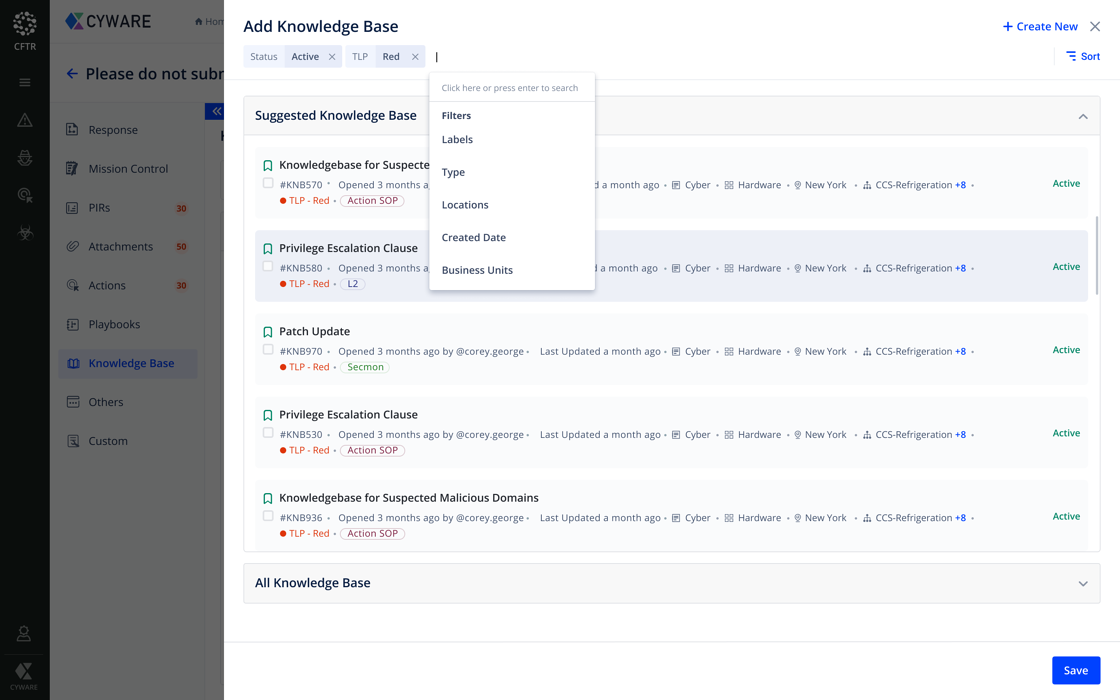
Get Playbook Suggestions
CFTR provides playbook suggestions based on incident attributes such as description, title, IOCs, incident type, severity, vulnerabilities, and more, to recommend a playbook using machine learning. Analysts can easily view relevant playbooks automatically based on similar incidents, incident attributes and utilize the playbooks to perform security automation and orchestration tasks.
Note that this feature works with the Orchestrate product integration.
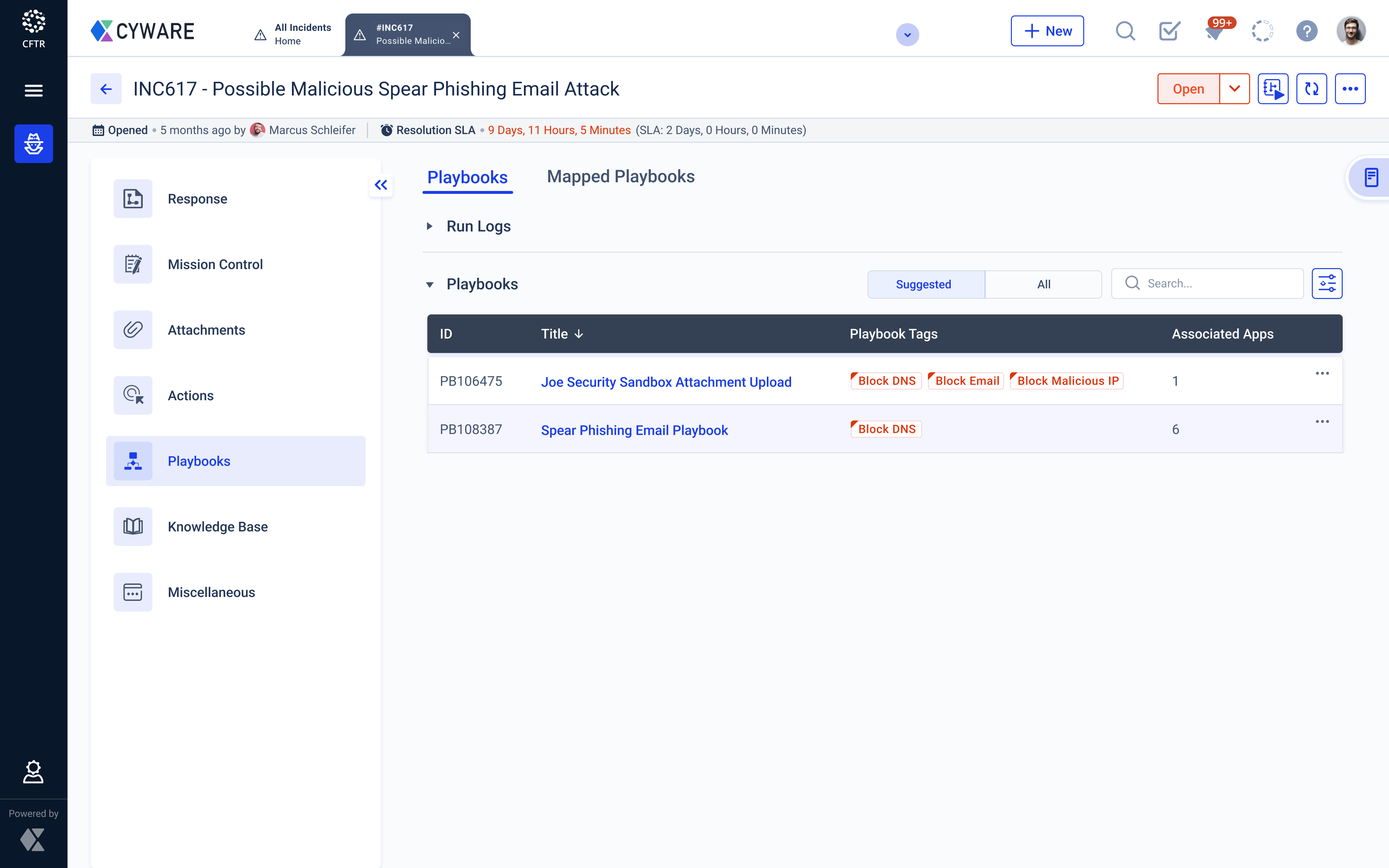
Get Suggestions to Merge Similar Incidents
Security teams analyze incidents and compare them to past incidents to find similarities. They use factors such as the date, type of attack, person accountable, the incident source, and the industry affected to help make these comparisons. Finally, analysts combine duplicate entries into a single incident before starting the analysis and investigation.
CFTR uses machine learning to associate one or more child incidents with a parent incident and provides suggestions to merge duplicate and similar incidents. Analysts can directly choose child incidents for merging and with the help of a merge template.
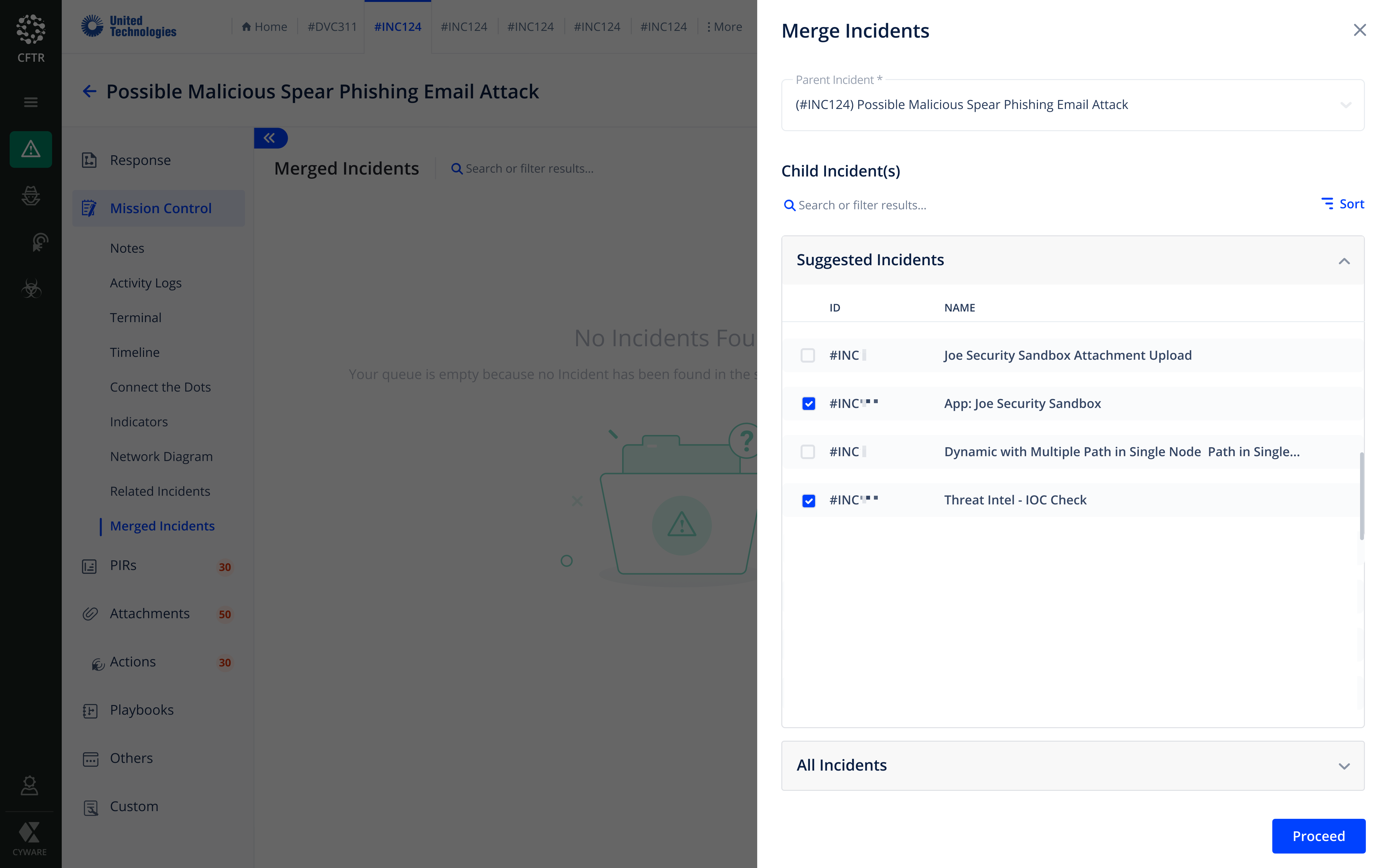
Get Suggestions to Connect the Dots
CFTR enables security analysts to identify the connections between an incident and all the historically observed incidents, malware, vulnerabilities, threat actors, campaigns, and more. CFTR provides machine learning insights to build the connection between various malicious activities by attackers and any observed incident. This gives a birds-eye view of all the activities in the threat landscape that are of concern when investigating a particular incident.
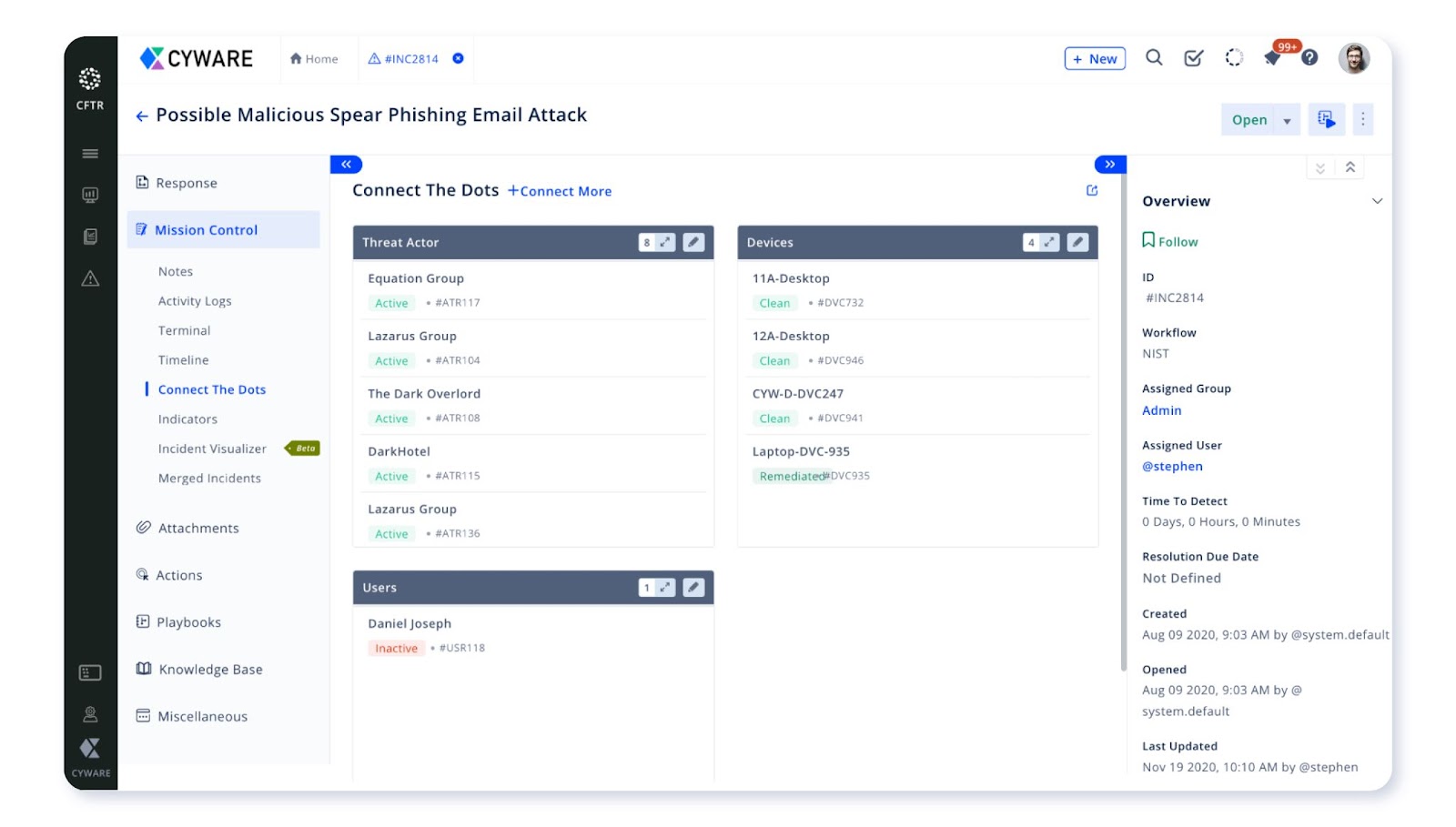
Benefits
Automate Incident Assignment
CFTR quickly and efficiently assigns incidents to analysts by understanding the previous history of incidents worked by an analyst and ensures that the workload is distributed accurately across the security team.
Faster Incident Response
By analyzing an incident in the context of the broader threat landscape, security teams gain a more comprehensive view of the potential gaps in their defenses and can prioritize the mitigation strategies accordingly.
Reduce Manual Effort
CFTR analyzes large quantities of data to discern patterns or anomalies using machine learning pattern recognition and behavioral mapping techniques to aid key security operations. This allows CFTR to automate areas that require tremendous human effort.